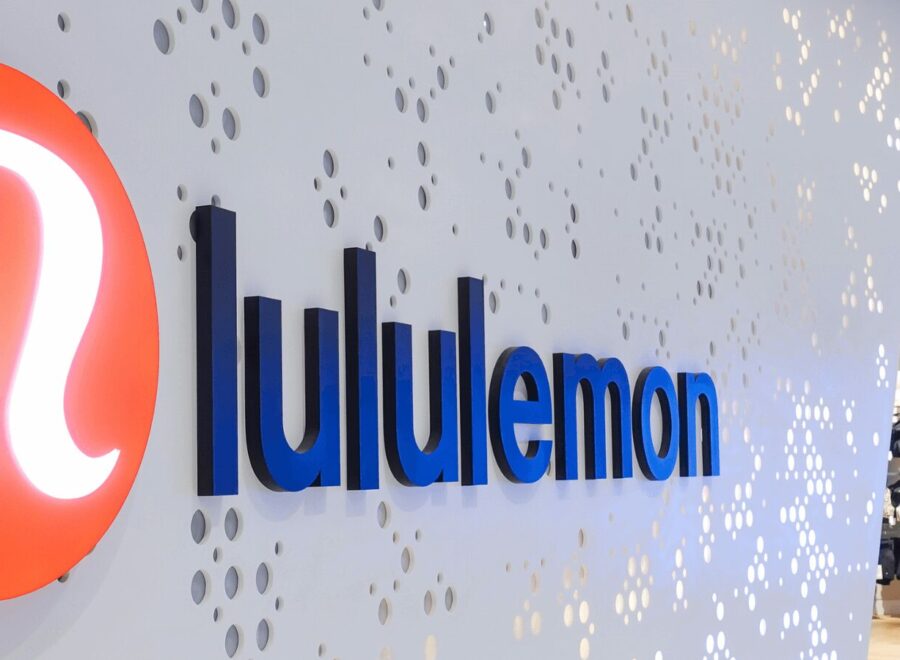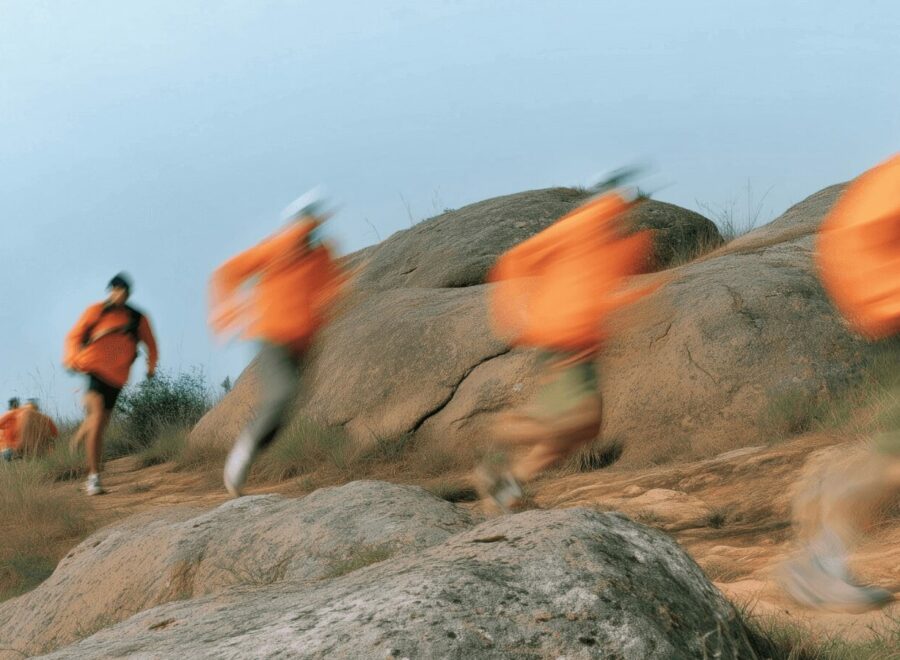Most leaders fear the risk of acting. The ones who build the future fear the risk of standing still.
Anousheh Ansari sees big problems the same way a climber sees a summit on the horizon. Distant. Challenging. And too important to ignore.
As the CEO of the non-profit XPRIZE Foundation, she’s found the perfect job for her approach to problems. Anousheh’s role is to incentivize breakthroughs in areas like carbon removal, space exploration, clean water, and longevity—big, hairy problems that can’t be solved on a tight deadline or narrow budget.
Anousheh is one of the most future-focused people I know. But when we sat down at TED in Vancouver, she shared some frustrations with the now. “It’s increasingly difficult because of this short-termism that people have,” she told me. “This type of thinking has led us to where we are today and the problems we’re facing. And most of the big problems we have will not be fixed in a couple of quarters. We need to really think about scalable approaches to solving them.”
Anousheh is Exhibit A for how some people are just wired to focus on the future. Only 16% of us, to be precise. The rest of us inhabit the land of the present, fighting fires and focusing on near-term targets… and risking missing seismic long-term changes that could either kill our business or offer the next billion-dollar opportunity.
As our conversation went deeper, it became clear that she doesn’t just balance the Now and the Next. She instinctively sees how the Now leads to the Next. “For me it’s been an essential part of anything that I do,” she said. “I look at (a problem) globally, I look at it long-term, and then I take short-term steps. That sort of comes naturally.”
Leaders who want to stay ahead would do well to learn how she spots what’s next, reframes risk, and works on the problems everyone else avoids.
The XPRIZE Foundation’s model is to propose a grand challenge and offer a sizable prize to the first team that can demonstrate a solution. In doing so, the XPRIZE attracts massive brain power and a diversity of potential solutions. They also attract investments from competitors that are collectively several orders of magnitude greater than the prize itself.
She isn’t interested in small challenges. “I never even thought about working on improving something and creating a product that was like the next variation,” she told me. “That never interested me. I think there are lots of people who can do that. I always loved introducing something new to the world. I was focused on solving a problem… I can think of a million better things to do with my time than create the next best dating app.”
A Mindset Forged in Adversity
As a girl growing up in Iran in the turbulent 1970s and 80s, Anousheh had her eye on an outlandishly tough challenge—going into space. Iran was in revolution and war, and had no space program. Relatives would humor Ansari over her obsession with Star Trek and the pictures she drew of herself in a rocket ship. But that little girl was deadly serious.
In 2006, now a U.S. citizen and successful telecom entrepreneur, Anousheh blasted off on a Russian Soyuz rocket that looked uncannily like the ones she drew as a girl, becoming the first Iranian in space and the first self-funded woman to fly to the International Space Station.
I asked her where she got this capacity to take on big challenges. It certainly wasn’t from her upbringing. Growing up in Iran, failure was seen as a mark of shame rather than a growth opportunity. She was conditioned to try to please everyone. Even after she moved to the United States, Anousheh was still a woman in the male-dominated field of science and technology. “I’m not part of the boys’ club,” she said. It took her years to shed that need to please others. To take risks. But when she did, it was a powerful liberation.
“[I realized] I’d always be trying to chase something that I will never achieve. Because even if someone likes what I do, someone else won’t like what I do. I needed to stop thinking about that and just focus on what I believe is the right thing for me and how I want to show up in the world.”
That clarity of purpose is what allows her to persist even when others don’t see what she sees. Now 58, she has the patience and confidence to keep building even when the path isn’t obvious, or when others don’t understand or believe in her vision.
“If you’re not doing it for the right reasons, you’ll give up and you’ll just throw in the towel and leave,” she said.
Rather than seeing failure as shameful, she now embraces it. Failure can be learning, provided you choose to use it. “If I don’t use it wisely, then it’s a failure.”
Building Before the World Is Ready
Ansari’s first venture, with her brother-in-law Amir, was founding Telecom Technologies to provide telecom companies with a bridge between legacy networks and next-generation technology. Its sale for $550 million in 2000 gave her the funds—and the freedom—to return to her childhood dream of space travel.
At the time, Peter Diamandis had launched the first “X” Prize. Like Anousheh, Diamandis had grown up being obsessed with the idea of traveling to space, but NASA was constantly defending smaller and smaller budgets and mired in controversy. When a friend gave him a book about Charles Lindbergh—the first person to fly from New York to Paris—he learned Lindbergh was doing it for a competition. The Orteig Prize offered a $25,000 reward by wealthy hotelier Raymond Orteig.
Diamandis wondered if he could do the same thing for space travel. Soon after, he announced a $10 million challenge for the first non-governmental team that could launch a crewed spacecraft twice within two weeks. The problem, though, was that Diamandis didn’t have a wealthy hotelier to fund the prize and claim the naming rights. Confident that a sponsor would appear before the prize was won, he called it simply the “X” Prize.
Those sponsors eventually appeared in the form of Anousheh and Amir Ansari. The success of the Ansari X Prize effectively launched today’s $500 billion private space industry.
Insights Over Risk Taking
Like the best future-focused leaders, Ansari is able to spot small, early changes today that point to more fundamental macro shifts down the line. When she commits to a big future goal, it’s because she’s recognized an important need that isn’t being met, often because it’s hard to do.
Her attitude to risk is core to this approach. Faced with a big, bold challenge, most leaders get preoccupied by the risks they run in pursuing it, be that pushback from shareholders, missing nearer-term targets, or straining budgets. Ansari turns that framing on its head: “The risk of not creating and the risk of not solving that problem to me is greater.”
It’s this relationship with risk that helps her move forward and persist when others hesitate and get impatient. It’s why she persuaded her family to cash in retirement savings to found Telecom Technologies.
Every leader can learn from this as they consider how to face long-term macro trends that are already in place, ranging from the shift to electric vehicles, to the effects of climate change, to the trend toward healthy eating and a more diverse population. The real risk doesn’t lie in preparing for these versions of the future—it lies in ignoring them.
Redesigning the Way Big Problems Are Solved
Today, at XPRIZE, she’s pioneering a model of innovation that many company leaders could learn from. The organization doesn’t just offer prize money for every moonshot idea that gets submitted. It designs clear, measurable, future-focused challenges that attract inventors, engineers, and scientists from around the world.
That clarity is hard-earned. Anousheh told me it takes months of research, hundreds of expert interviews, and extensive iteration to hone a vague ambition into something solvable, and that isn’t defined too narrowly or too loosely. They ask questions like: “What breakthroughs and innovations do we need? Why is the problem stuck? Who’s investing in it? Why aren’t they investing?”
This intensive research helps weed out goals that are genuinely unrealistic or, while ambitious, are already being solved by the market.
“Solving homelessness is a genuine moonshot, but is actually far harder than an actual moonshot,” she explained. Involving mental health, drug addiction, and public policy, homelessness is the kind of complex, multifaceted challenge that defies an overarching solution and needs to be broken up into separate goals.
This process of carefully evaluating and defining the truly important challenges hasn’t just won entrepreneurs prizes—it’s been the foundation for enduring competitive success for their businesses.
“They say, ‘My company would have died if I had shifted my direction to do exactly what the competition asked me to do,’” Ansari said.
That insight really stuck with me. Most executives chase market trends… and end up with similar products. Rather than measuring themselves against the competition, leaders should be defining and solving their own challenges based on how they see the future, or different versions of the future, unfolding.
Anousheh Ansari is, of course, keenly focused on making sure that XPRIZE itself is prepared for the future. She’s building an endowment to sustain the foundation beyond her and Diamindis. And she’s bringing in new talent while also nurturing the alumni ecosystem of former prize competitors as a source of support and fresh ideas.
She’s doing it because she fundamentally believes her organization is an essential player in creating a better future. “I don’t see any other institution that has this long-term vision and is trying to actually act on it.”

 Dev Patnaik
Dev Patnaik


